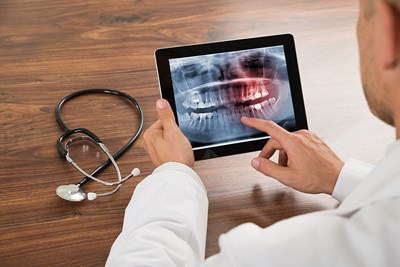The temporomandibular joint connects the jaw to the skull and is responsible for the jaw’s range of motion. Every time you open or close your mouth to talk or chew or your food, you are using your temporomandibular joint. When this joint and the surrounding muscles become damaged or injured, you may experience TMJ syndrome. The most common symptom of this jaw disorder is pain.
TMJ is usually self-diagnosable. If you are experiencing more than one symptom, especially pain, you probably know you have TMJ. If the pain is constant and becomes worse, seeing a doctor or dentist is a good idea. You will be evaluated by your doctor during a consultation.
Before a physical exam, you will be asked about your medical history. For example, you should expect to answer questions about your pain and oral habits, such as if you grind or clench your teeth, bite your nails, or chew gum frequently.
During the physical exam, your doctor will examine your neck and jaw for pain and tenderness, how your teeth align when biting down, and notable sounds like clicking or popping when you open and close your mouth.
Part of diagnosing TMJ also includes ruling out other possible conditions or causes for your symptoms. When you see a doctor, you may be given blood tests in order to look for lupus, rheumatoid arthritis, or gout. Other tests include imaging tests to look for abnormal bone structure of the jaw or tissues of the joint. Image tests include X-rays, CT scans, and MRIs.
Have more questions? See more answers from Alot.



